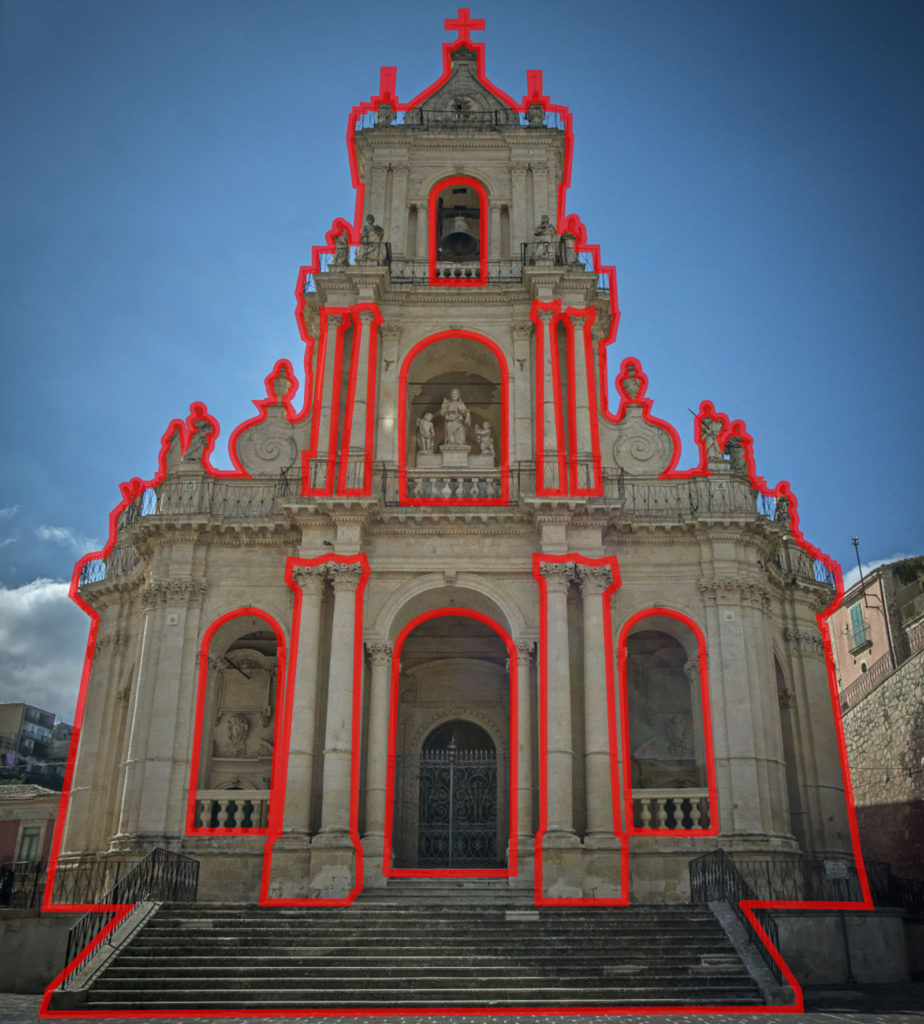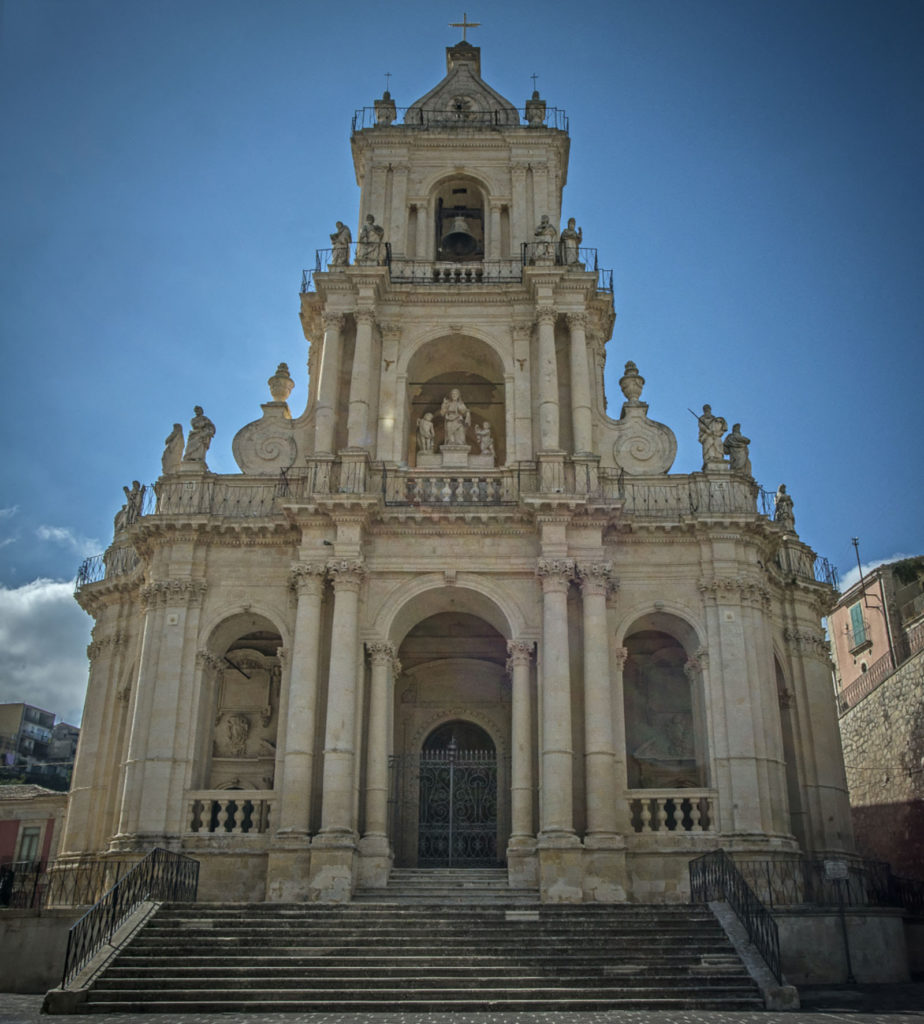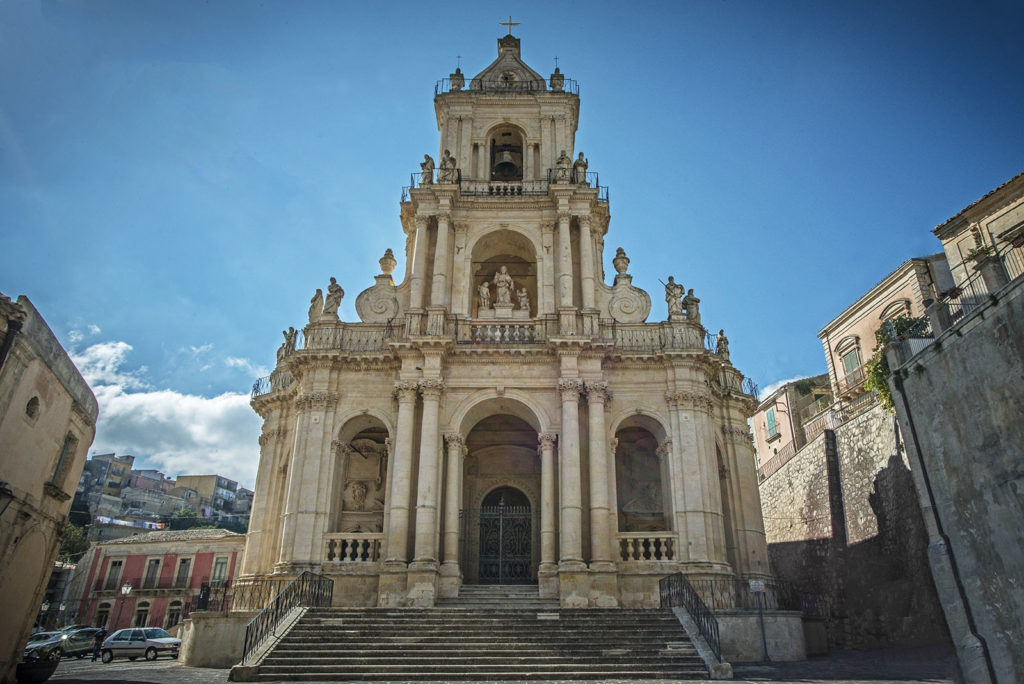 The church of San Paolo (St. Paul) was built around the mid-18th century in an area of the town where the small church of Santa Sofia (St. Sophia) once stood.
The church of San Paolo (St. Paul) was built around the mid-18th century in an area of the town where the small church of Santa Sofia (St. Sophia) once stood.
The Basilica of San Paolo, destroyed by the earthquake of 1693, was rebuilt between 1720-1730 and became one of the most beautiful examples of Baroque in the Val di Noto. The mighty façade was probably built by architect
Vincenzo Sinatra
 .
.
This possible attribution is linked to the similarity of its lateral concavities with Palazzo Ducezio in Noto, where Sinatra worked in the 1740s. It is structured on three levels of arches and columns, surmounted by Corinthian capitals and a
prònao

that emphasises the depth of the façade, filtering light and creating evocative chiaroscuro effects.
The first level consists of five arcades, each divided by two pairs of Corinthian columns supported by a large plinth at the base of the church.
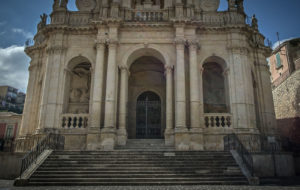
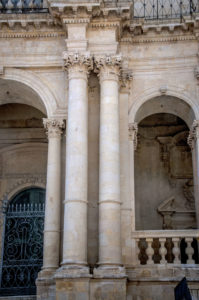
The second level is astounding. In the centre is a large statue of Christ who appears almost miraculously next to two guardian angels. The bell tower rises up from the final level.
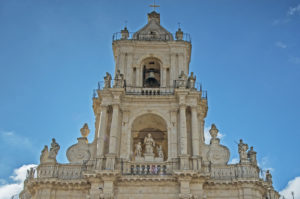
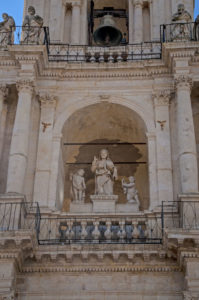
Six pairs of statues of the Apostles adorn the façade, surmounted by a frieze depicting the sword of St. Paul twisted around by a snake. One of the most significant elements of the façade is the large bronze portal depicting the life of the patron saint.
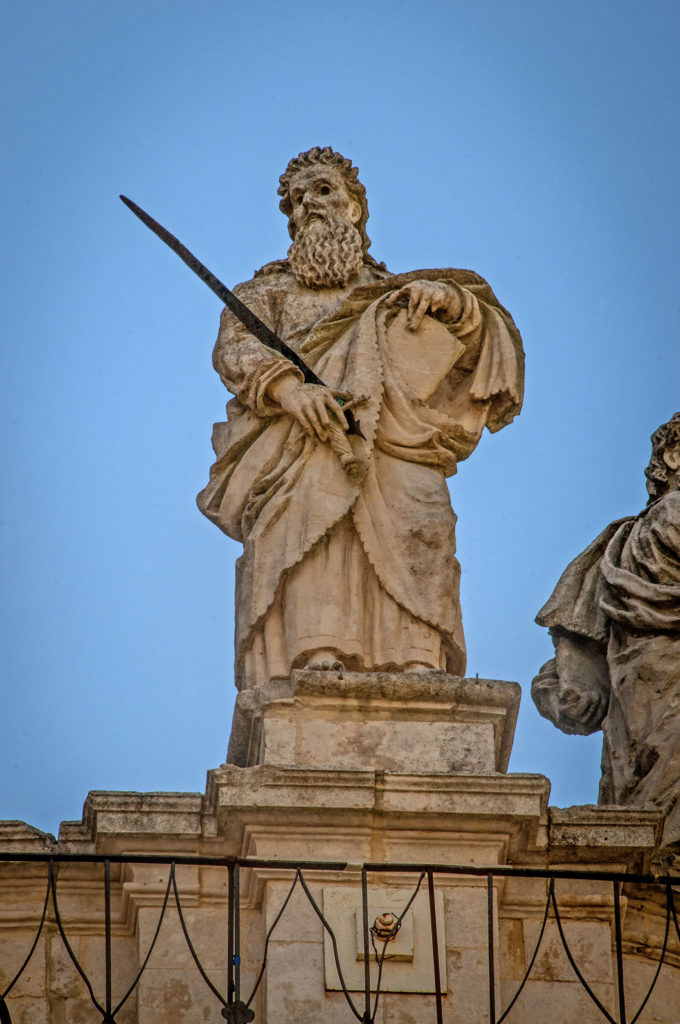
 The church of San Paolo (St. Paul) was built around the mid-18th century in an area of the town where the small church of Santa Sofia (St. Sophia) once stood.
The church of San Paolo (St. Paul) was built around the mid-18th century in an area of the town where the small church of Santa Sofia (St. Sophia) once stood.
.
